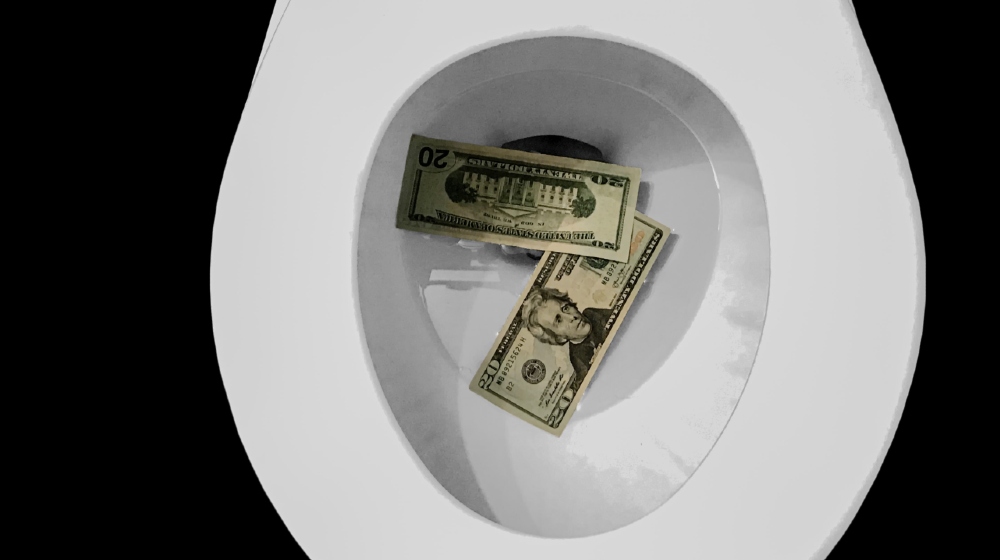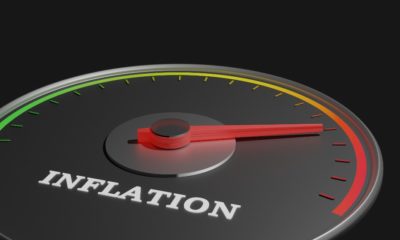Business
The Dollar Index Is Falling, You Can Thank the Fed for That

The US Dollar index is falling, and you can thank the Federal Reserve for that. Foreign exchange dealers ganged up on the dollar Tuesday to push it to a new low. The ICE U.S. Dollar Index fell to a session low of 91.75, its first below 92.00 ratings since May 2018. A rebound back to 92.19 before the markets closed helped prevent the disaster to persist. And, with the Fed saying it will allow higher inflation, expect the dollar's slide to continue.
In contrast, the Euro gained strength and settled at $1.19 versus the greenback. The British pound ended at $1.34, but only after registering a high of $.134 earlier the day. While there are no primary suspects, analysts think that the Fed's new policy may have played a part. Their adjusted policy allows inflation to exceed 2% without automatically hiking interest rates.
RELATED: New Fed Policy Allows Higher Inflation
ING analysts Francesco Pesole and Petr Krpata noted the effects of the policy on the dollar. “With Chair Powell cementing the negative real yield narrative for the dollar, there is little to suggest the current U.S. dollar bear trend is to stop,” they wrote. The added that high nominal and real rates were the key ingredients behind a stronger dollar in recent years. “None of these should strategically bode well for the dollar.
With expected higher inflation but lower interest rates, U.S. Treasury yields tend to go lower. Tuesday, the real yield on the 10-year Treasury note stood near -1.08%. This is already a recovery from the all-time low of -1.11% the day before. This negative expected return makes the dollar less attractive to investors.
Dipping Dollars
2020 has not been kind to the US dollar. Earlier, the pandemic created a frenzy for dollars as economies shut down. As governments went back to work, central banks began protecting their economies. The Fed applied stronger measures to protect their economy, applying generous monetary stimulus. For the dollar demand, the agency aligned currency swap lines with central banks. This helped ensure the dollar's availability and cooled off demand.
With the adjustments, the dollar took a hit. The index fell 4% in July for its biggest one-month drop within the decade. Analysts attribute it to falling U.S. real yields. The global economy looks to outperform the US while the pandemic rages on.
Kit Juckes of the Société Générale sums it to a diminished US advantage versus other economies. “The dollar cycle has turned because real yields have collapsed, in absolute and relative terms,” he noted.
In a note last week UBS analysts see a continuance of the dollar's fall, at least until the votes are in. They noted: “We expect the currency to be undermined by an ebbing of safe-haven flows, a reduction in the U.S. rate advantage, and political uncertainty ahead of the November presidential election.”
The Stock Market, Precious Metals Emerge
Some markets capitalized on the dollar's fall. The US stock market erased its losses from earlier this year with a remarkable bull run. Both the S&P 500 and the Nasdaq have hit record highs despite the economic slowdown.
Precious metals also hit records highs, with gold breaching the $2,000 per ounce barrier. With investors avoiding dollars due to the volatility, they turned to metals instead. And with the lessening of the dollar's value, gold and silver became more affordable. Platinum and palladium are also making inroads as the investments to beat.
The Dollar Gets a Credibility Hit
Standard Bank's Steven Barrow says that the dollar usually works better in a crisis. The unique global situation caused by the pandemic contributed to its present struggles. The economic and political uncertainties going to the elections pose a “crash risk.” This risk is more common with emerging market currencies instead of the greenback. Barrow added that recent Fed measures reduced the US rate premium compared to others. If you factor in an election marred with delays or fraud, this wounds the US's credibility further.
Watch this as CNBC’s Jim Kramer thinks that the U.S. dollar index could be bottoming:
Do you think that reports of a dollar demise are greatly exaggerated? Or are the Fed's moves working against the American greenback? Let us know what you think by sharing your comments in the section below.















